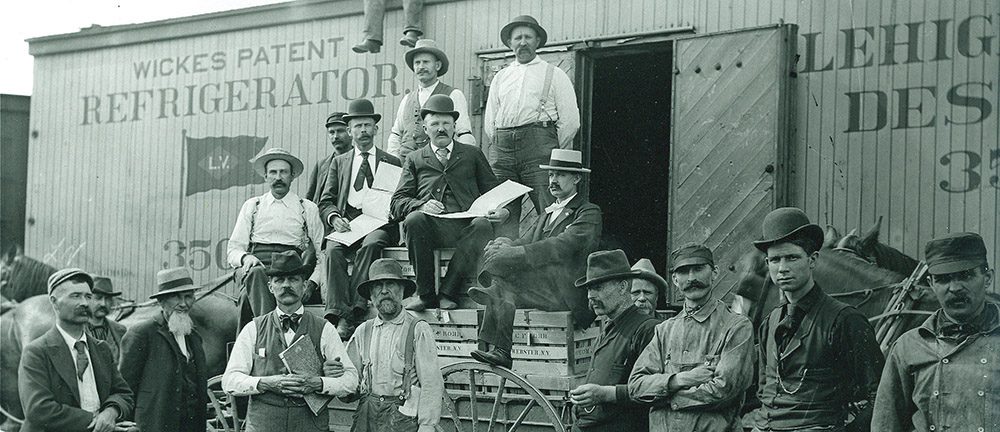The following is the last in a seven-part series. We hope you’ll enjoy.
To fill the stomachs of more than 11 million U.S. Army soldiers during World War II, the U.S. Quartermaster’s Corps called on Webster Canning & Preserving Co. to help. Webster joined the ranks of produce processing companies across the country to provide massive quantities of canned fruits and vegetables.
But virtually all of the local men were serving their country overseas, and Webster Canning found itself with barely a handful of personnel to process the massive 1942 tomato crop. The company put out the call to the women of its home town, and fifty responded immediately, cheerfully walking away from their own household’s canning and preserving to do their part for the war effort.
“It’s a lot different from a tea party,” the day’s supervisor, Helen Hilfiker, told the D&C reporter, “but I felt it was really my duty to do something worthwhile.”
How did a produce company in upstate New York draw the attention of the Quartermaster? Webster Canning & Preserving Company grew from humble beginnings in 1868, when brothers Simeon and Edgar Curtice opened a small grocery store in Rochester. The Curtice brothers found themselves with fresh produce that they could not sell before it spoiled, so they decided to go into the canning business. Demand grew so quickly that they soon added locations in Vernon, New York and Woodstown, New Jersey.
By this time, the Rome, Watertown and Ogdensburg Railroad (RW&ORR)—what Websterites call the Hojack Line—had arrived in Webster, and the Webster station bustled with activity. Webster Canning constructed its factory alongside the railroad,
making it easy to unload crops and load canned fruit and vegetables.
In December 1917, Webster Canning Company manager William F. Kittelberger received a letter from the Quartermaster, asking about “the available supplies of canned apples,” the D&C reported. Soon the company had contracts to supply the military with canned fruit products throughout the war.
This proved to be a boon for the town and village of Webster. Kittelberger acquired a canning factory in Hemlock to handle peas and corn, and another one in Rochester to “put up a full line of fruits, vegetables, jellies, jams, chili sauce, catsup, etc.”
It’s no wonder that the thriving Webster Canning & Preserving Co. attracted war business once again from 1942 to 1945. Milton Hallauer added a 200-foot conveyor system in May 1943 that would allow several farmers to unload trucks full of produce at once.
By mid-September, tomatoes were “clogging the cannery’s yards and platforms,” the D&C reported, and Webster Canning’s new lines began to pay off handsomely. Hallauer hired about 100 women, and added another 100 in an evening shift to keep the line moving day and night.
To support the factory’s stepped-up production, the U.S. Employment Service sent an unusual group of workers: Italian prisoners of war from Mussolini’s army. The American workers regarded these men with understandable suspicion. It took only a couple of days, however, to see that the foreign soldiers were only too happy to be out of the war, well fed, and well treated.
“Conversation with the captives is strictly limited …but nobody needs to ask the smiling fellows who sing at their work whether they’re happy in America,” the D&C noted. The hardworking men gained the respect of their coworkers, and the office staff made sure they had plenty to eat beyond their camp rations. Office secretary Mabel Sartoris observed, “You can tell by the way they eat, they’re hungry clear down to their toes.”
Webster Canning & Preserving continued to produce canned goods until 1952, when Hallauer closed the canning side of the business and converted the buildings to cold storage. While its buildings have long since been razed, the company retains its place in history for its critically important role in sending quality fruit and vegetables to millions of American soldiers during the world’s two largest wars.
Read the first piece in this seven-part series: Daniel Webster: A Legacy of Inspiration



